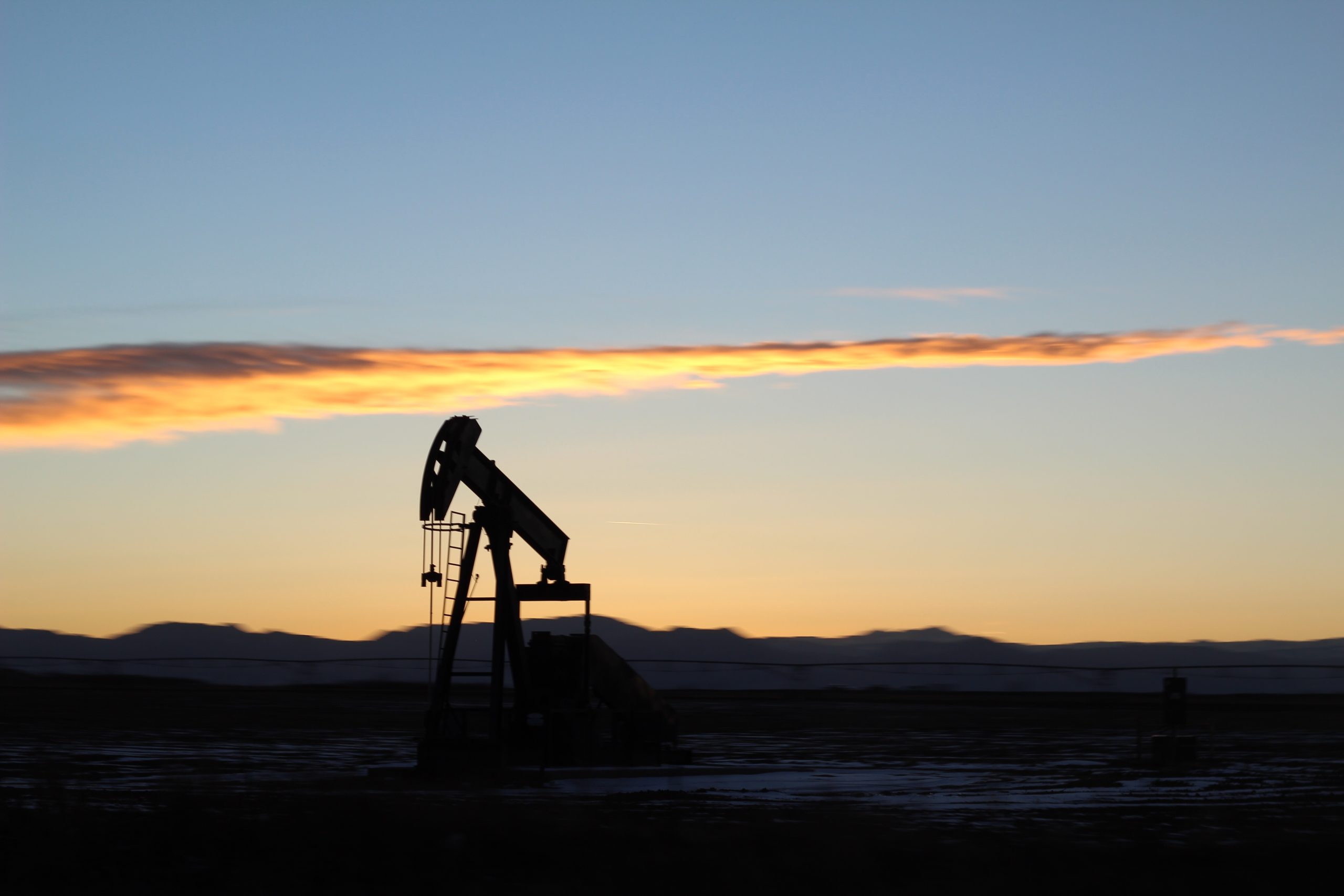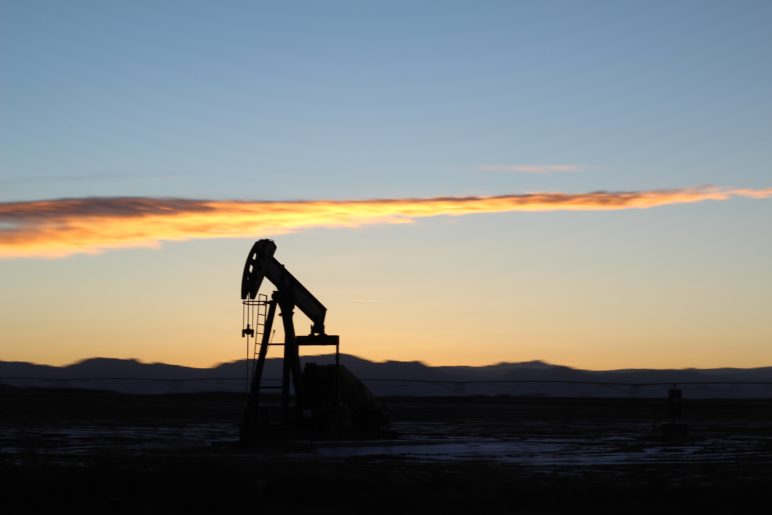Oil markets went haywire this spring. When the economic distress of coronavirus lockdowns arrived near-simultaneously with an OPEC price war, oil futures plunged well into negative pricing territory and oil company stock prices nose-dived. The situation was so dire that pipeline operators were actually telling oil companies to stop producing because there was nowhere left to store all the crude that no one wanted to buy.
The fossil fuel companies that had counted on steadily growing markets were suddenly experiencing a major reversal of fortunes. As the chief financial officer of Halliburton explained during a March webcast, “Wall Street is shut to the industry. There is no more lifeline. Financial markets aren’t lending their support.”
Now, as the year nears its mid-point and economies begin to show some signs of recovery, it’s worth surveying the likely impacts on workers and regional economies. The Northwest is relatively insulated from shocks to the energy sector. Although the state of Washington hosts several oil refineries and northern British Columbia produces fracked gas, the region is not home to many major fossil fuel installations and it does not employ large numbers of energy workers.
These places—northern Alaska, North Dakota, and Alberta—supply the Northwest with the majority of its crude oil and the products that are refined from it, like gasoline, diesel, and jet fuel.

Still, Cascadia consumes energy, including oil, at rates comparable to the rest of North America, which means that it is linked to oil producing regions, three in particular. These places—northern Alaska, North Dakota, and Alberta—supply the Northwest with the majority of its crude oil and the products that are refined from it, like gasoline, diesel, and jet fuel.
Each of those regions is now undergoing meaningful economic distress from the collapse in oil.
Alaska
The North Slope of Alaska was traditionally the major supplier of crude oil to Washington’s refineries and therefore much of the Northwest’s population. Drilled on the fringes of the Arctic Ocean, the oil travels south via the Trans-Alaska Pipeline that crosses the state’s remote interior to reach a marine terminal at Valdez where it is loaded on tankers bound for the refining centers on Puget Sound, the California Coast, and elsewhere. Although Alaskan oil is still a major source of crude for the Northwest, the state’s production is in long-term decline, a trend that has only accelerated with 2020’s market downturn.
Alaska’s oil production has gradually slowed from its 1988 peak of over 2 million barrels per day. By 2000 it had fallen to around half that. Since 2010 the state’s oil production has hovered at a bit below 650,000 barrels per day, but this year’s struggling oil markets brought new reductions and by March total production had fallen to just 456,000 barrels per day. The state’s largest oil producer, ConocoPhillips, cut its production in half in 2020, by about 100,000 barrels per day, while slashing its planned capital spending in Alaska by $400 million.
State oil revenues have declined correspondingly, a big problem because Alaska depends so heavily on oil to fund its government. In 2019, fully 48 percent of the state’s revenue came from oil and gas production, which means that falling oil prices and consequent cuts in production have the potential to cripple Alaska’s finances. Budget projections are already down $300 million for the current fiscal year and down $600 million for 2021. All of it spells trouble for the state’s universities, infrastructure, and social programs that rely on government funding.
North Dakota
As Alaska’s oil production waned, North Dakota saw explosive growth, in the mid-2010s, particularly in fields such as the Bakken Formation that spans eastern Montana and western North Dakota. New fracking and horizontal drilling techniques made it possible to reach shale oil deposits deep underground. Consequently the region saw staggering population growth: the number of people living in Williston, North Dakota nearly tripled over the last decade as workers flocked to oil-related jobs in the area.
So sudden was the region’s oil boom that companies found themselves with scant infrastructure to move the crude to market. Railways seized the opportunity to play a role traditionally reserved for pipelines: moving large volumes of crude oil. As refineries and ports began hatching plans to receive the product from trains, the rail industry embarked on a breakneck campaign to build tanker cars. The oil industry also pushed forward with new pipeline projects, including the controversial Dakota Access Pipeline that drew opposition from native communities.
There was money to be made while it lasted, but in 2020 the industry suffered a major reversal of fortune. North Dakota shale oil is vulnerable to low oil prices because it is not profitable unless oil can sell for around $40 per barrel and because it is relatively easy for fracking operations to scale down as prices dictate. By the end of April, roughly a third of the state’s oil wells were already idle and crude production had declined by 20 percent. And Continental Resources, the largest oil producer in North Dakota, had reportedly stopped all drilling and “shut in”—disabled, perhaps permanently—most of its wells in the state’s Bakken shale field. In May, as prices slumped to around $25 per barrel, Hess Corp, a major oil producer in the state, found itself so glutted with un-sellable crude that it resorted to purchasing three super tankers to store what it could not sell. Stationed off the Gulf Coast, these tankers are slated to hold around 2 million barrels of oil for refining over the summer. Although prices have since recovered somewhat to around $37 per barrels, oilfield decommissioning is still proceeding quickly.
As in Alaska, the industry’s decline spells trouble for North Dakota’s state coffers. In the 2017-2019 biennium, the states’ oil and gas tax revenue had risen to $4.6 billion—accounting for 52 percent of the North Dakota’s total revenue— an inflation-adjusted increase of almost 60 percent from lows during the Great Recession. But declining oil sales mean declining revenue. The North Dakota Tax Commissioner projects the state will lose almost $300,000 in expected tax revenue every day.
The situation is also bad for the many people who depend on oil production for their livelihoods. According to the Director of State Mineral Resources, the oil and gas industry supplies more than 72,000 jobs in North Dakota, which works out to about 16 percent of the entire state’s workforce. Although these job numbers include workers with only second- or third-order connections to the industry, there is little question that the situation will darken North Dakota’s employment picture. And the economic shock to North Dakota may worsen, with some experts arguing that 70 percent of shale oil rigs in the state could be shut down by autumn.
The collapsing fortunes in the North Dakota oil fields will likely mean fewer oil trains in Northwest communities. The vast majority of oil-by-rail delivered to the Northwest comes from the Bakken and early data suggest that the number of oil trains had fallen 11 percent by late March as compared to March 2019. The decline in oil train traffic to the Northwest is likely to deepen.
Alberta
Home to the controversial tar sands—a sticky mixture of hydrocarbons, sand, and clay—Alberta is an oil-producing heavyweight, responsible for more than 80 percent of total Canadian crude production. Producing oil from the tar sands is a complex and energy-intensive process that requires companies to make large capital investments over long time horizons, which means the region is less prone to fluctuations than places like the Bakken formation. Although oil production in Alberta has been slowly rising for many years, most analysts agree that the industry has been constrained by a lack of space in pipelines to move the material to market. In fact, the conservative Fraser Institute argues that insufficient pipeline capacity cost the Canadian energy industry over Can$20 billion in 2018 alone.
Even though Alberta’s oil industry is relatively stable, the downturn in oil markets has already taken a toll, with oil production in the province down 13 percent from a year ago. Many industry observers argue the province is facing serious long-term challenges because it is an intrinsically high-cost producer and oil is likely to sell for relatively low prices over the coming years. Depending on the oilfield and the type of production, the “breakeven” cost for oil in Alberta—the amount at which extraction is profitable—ranges between $52 and $85 per barrel (using the West Texas Intermediate benchmark). It’s currently around $38 and will probably to stay low for years, rendering the vast majority of Alberta oil operations uneconomical.
Unlike their American counterparts, Canadian governments at both the federal and provincial levels moved quickly and decisively to shore up the oil and gas industry as the downturn began. The federal government is sending $1.7 billion in aid, funding that is designated mostly to clean up old well sites in three western provinces, a potential boon for newly unemployed for industry workers. The federal aid is likely welcome because the industry’s downturn will undoubtedly be harmful to Alberta, at least in the short term. Accompanied by precipitous drops in industry spending, economists are projecting the province’s economy to contract by seven percent in 2020, making for the deepest recession in its history.
Alberta’s political leaders are keen to turn the pandemic to the industry’s advantage. The provincial government is providing Can$7.5 billion in equity investments and loan guarantees to speed the construction of the Keystone XL Pipeline, which would move oil south to the Gulf Coast, as well extending the term of mineral agreements to allow companies more flexibility and more time to raise capital. And Alberta officials continue to cheerlead for the Trans Mountain Pipeline expansion, which would deliver more Alberta oil to the Pacific. Energy Minister Sonya Savage recently went on record to say that, “now is a great time to be building a pipeline because you can’t have protests of more than 15 people.” Construction on a segment of the Trans Mountain pipeline began in June, in Kamloops, British Columbia, and despite COVID-19, crews are moving ahead with the work.
While the pipeline expansion work continues apace, data from the Canadian oil industry show that, owing in part to reduced demand for Alberta’s oil, the region may already have a surplus of pipeline capacity. In other words, the problem for the province’s oil industry is no longer that there’s no way to move the product, it’s that there aren’t enough buyers, at least not at the prices needed to make a profit.
The road ahead
It is extremely difficult to predict how energy markets will respond over the long term to the economic and public health crises brought about by COVID-19, though it is possible to make some guesses. The International Energy Agency (IEA) predicts that global oil consumption will not return to pre-crisis levels for at least two years, an outlook that squares with the US Energy Information Administration’s forecast that domestic oil production will decline in both 2020 and 2021. Looking out further, the prospects for oil look dim. Before COVID-19, the IEA projected that 2030 would mark the peak of global demand for oil followed by a long gradual decline.
Yet these macro-views mask considerable uncertainty about how fully and how quickly economies will recover, as well as how durable will be recent shifts in commuting, air travel, transit use, and a dozen other energy-consuming (and energy-saving) activities. Plus, there are outstanding questions about electric vehicle market growth, the trajectory of power grid emissions, and the growth in plastics manufacturing. Perhaps most importantly, no one knows for sure how nations and regions will pursue their climate protection strategies in the coming years. What seems to be increasingly clear, however, is that economic strategies based on oil are unwise bets for the future.
Zane Gustafson is a freelance researcher who holds a Master’s in Public Affairs with a focus in climate policy from the Evans School of Public Policy and Governance at the University of Washington. He also studies foreign affairs, political rhetoric, and American history.












MParker
Great article, Eric and Zane. Thank you!
Sounds like Sightline and the Vatican are hearing the same call!
https://www.naturalgasintel.com/articles/122397-vatican-calls-for-carbon-tax-investing-in-alternative-energy